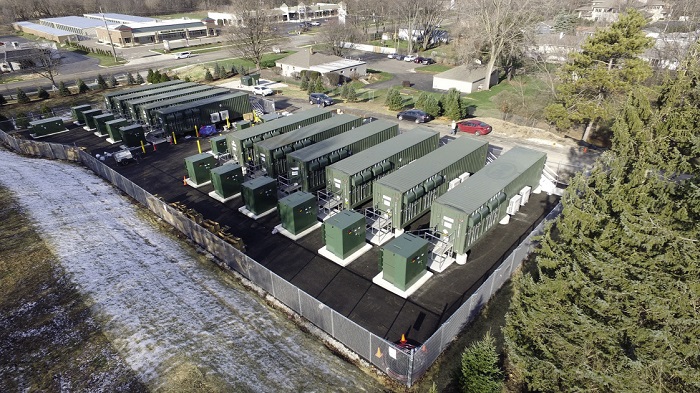What do you expect from the Indian energy storage market in terms of investment?
Rahul Walawalkar: The market for energy storage in the South Asia region is dominated by India. Energy storage has almost 20 different applications in India, such as renewable integration, grid ancillary services, diesel minimization, micro-grids for energy access and campuses, as well as electric vehicles.
India Energy Storage Alliance (IESA) estimates the market for energy storage would grow to 100-200 GWh between 2017-22. Due to this growth, we anticipate existing energy storage and PCS companies to expand their existing capacities for manufacturing as well as new investments to target new lithium-ion cell manufacturing. As per our initial estimates, India could attract investments in the energy storage devices manufacturing sector to a tune of $4-6 billion in next five years. With growing opportunities globally, we are confident that India will not only be one of the largest markets for advanced storage technologies, but it can become a global hub for manufacturing, with significant export potential to South East Asia and MENA.
Apart from India’s R&D policy for storage, do you expect any policy framework distinctly for energy storage?
Policy makers in India have recognized the potential of energy storage to help the Indian government meet various policy priorities such as the National Solar Mission, National Electric Mobility Mission and Mission for energy access. The National Institution for Transforming India (NITI Aayog), as well as the Ministry of New and Renewable Energy (MNRE), has been working on a draft national energy storage mission for the past year. The main policy intervention required is for transparent price signals and the removal of barriers such as higher GST and import duties; this will kick-start the market for advanced energy storage in India.

Currently most of the investment decisions for the power sector are being driven by average levelized costs, while there are various applications where the marginal costs of current technologies or solutions being planned is significantly higher even that current cost of storage technologies. For example, diesel replacement is a low hanging fruit, but due to various subsidies given to island consumers, they are not witnessing the true cost of power from such sources. Also, even in case of areas where diesel generators are used, there is an opportunity to improve efficiency by increasing loading of the generators for certain hours and shutting them down for other times where solar + storage can meet the load. On part loaded condition the marginal cost of electricity from diesel generator could be higher than INR 20 ($0.31) /kWh, but due to lack of policy certainty and delays in decision making, we are yet to achieve goals set up for Greening the Islands. For electric transportation, we need to have a clear strategy for addressing the need for charging infrastructure. For this market to grow, we need to focus on building a local manufacturing eco system as well as investing in skill development for ensuring after-sales support.
To commemorate on the 1st World Energy Storage Day, India Energy Storage Alliance (IESA), India's leading alliance on energy storage will organize India Energy Storage Policy Forum on 23rd September 2017 at Delhi. The objective of this forum is to have a dialogue between thought leaders from industry and the policy makers to identify policy priorities that can help drive adoption of energy storage in India and make India a global hub for manufacturing of advanced energy storage technologies by 2020.
In this policy forum, key government bodies that are working on regulations that affect energy storage, micro grids and electric vehicles will be part of the roundtable. The government organization represented will include NITI Aayog, Invest India, International Solar Alliance, Ministry of Commerce and Industries, Ministry of New & Renewable Energy, Ministry of Power, Central Electricity Regulatory Commission, Central Electricity Authority, Department of Science & Technology, Indian Railways, Power Grid Corporation of India, National Thermal Power Corporation, Solar Energy Corporation of India and others.
How can energy storage support the renewable market and India’s connected population?
India has an ambitious plan of 175 GW renewables by 2022, including 40 GW of rooftop solar, 60 GW of grid-scale solar and 60 GW of wind. The key challenge for reaching these targets would be the ability of the grid to integrate variability associated with these renewables, as well as huge investment required for upgrading the T&D infrastructure. Energy storage can help in better integration of these renewable by providing multiple values to the system, such as optimizing T&D investments, addressing forecasting errors in wind and solar generation for more accurate scheduling, addressing local reliability issues by providing reactive power support, and also enabling end users for managing peak load and more efficient utilization of distributed renewables.
With the rapid reduction in cost of both solar and storage, customers can see solar+storage as an alternative for peak power from the grid at the same time, and utilities can avoid investments in peaking capacity, or eliminate load shedding by utilizing these resources.
Will upcoming micro-grid and electric mobility concepts transform the Indian energy storage market?
Rural electrification was one of many “unique” issues in India where we believed that emerging technologies can help India in leapfrogging development. Over 200 million rural Indians do not have access to the grid access, while just over another 200 million have a poor connection to the grid. These far-fetched places have the largest potential for micro-grids to give a return.
IESA launched MICRO, the Micro-grid Initiative for Campus and Rural Opportunities, last year with a goal of bringing down the levelized cost of energy by 30-50% by 2019. This initiative has been selected by USAID as one of the innovative clean energy projects under the PaceSetter Fund, and recently the European Space Agency has partnered with IESA to explore the role of space-based tools and satellite data for improving micro grids in India. The Global Energy Storage Alliance is also supporting this initiative.
Popular content
So with support from 70+ IESA member companies, we are confident that energy storage and micro grids have the potential to transform India’s electric grid in the next 5-10 years.
The government of India has clearly decided to prioritize electric vehicles (EV). Energy Storage is a key component of this and there are number of ways in which EV adoption could be transformative for the grid. First, EVs could present substantial load for the electric grid that in the past year has become surplus on generation. Secondly, with better tariff structures and use of the right storage technologies in EVs, we could also use EVs as distributed storage and provide grid balancing services. This transformation can also help not only in greening the transportation fleet by reducing diesel/petrol consumption and associated emissions, but can also help in greening the grid if EVs are used for better integration of renewable resources.
Which technology will be expected to lead the growth of the storage industry?
In recent years, huge investment has gone in to support alternate technologies. Early stage investment has supported a range of technologies from lithium-ion, lithium-sulfur, flow batteries, zinc-based batteries, and sodium-based batteries. Billions of dollars have also been invested in commercialization and scaling up lithium-ion manufacturing in places such as China, the U.S., Japan, South Korea and Europe. Lithium-ion is becoming the go-to technology for electric vehicles as well as for grid applications.
There is also progress taking place with ultra-capacitors as well as flow batteries. There are also thermal storage technologies that can have a huge opportunity in India, particularly for applications such as cold storage for agricultural produce as well as air conditioning and process applications.
IESA also anticipates that lead acid batteries can play a significant role for at least 5-10 years with the improvements that can be made through advanced lead carbon, bipolar design etc. There are a number of advanced lead acid technologies that could be introduced in the next couple of years, if existing companies can address the “Innovators’ dilemma”. Unfortunately, for the past 4-5 years, we have not witnessed leading Indian lead acid companies take this potential threat seriously, so time will decide if they are able to adapt or if they will suffer from the “Kodak” phenomenon – which famously lost its market dominance with advent of the digital camera.
How do you rate Indian manufactured battery standards compared to batteries from South Korea, Japan, China, the U.S. and Germany?
Manufacturing of new batteries is still not happening in India. We only see assembly activity. At least five major industrial groups in India are waiting for clarity in policy before foraying into cell manufacturing. States such as Telangana, Andhra Pradesh, Tamil Nadu, Maharashtra and Gujarat are showing interest in attracting investments from companies to set up units in this space.
IESA is working with various member companies and research institutes to set up energy storage-focused incubators and accelerators at VJTI in Mumbai. The proposed accelerator has been selected by NITI Aayog among the 60 incubators under the ATAL Innovation scheme out of more than 3,700 applications.
We are very confident that Indian manufacturers can compete with global leaders on quality and price if the correct investments take place to match the scale of manufacturing. In the past decade, various researchers and entrepreneurs of Indian origin have made an impact on the global energy storage space. IESA recognized 70 such contributors earlier this year at Energy Storage India, the international conference on energy storage, micro-grids and EVs that took place in Mumbai in January 2017.
This content is protected by copyright and may not be reused. If you want to cooperate with us and would like to reuse some of our content, please contact: editors@pv-magazine.com.


By submitting this form you agree to pv magazine using your data for the purposes of publishing your comment.
Your personal data will only be disclosed or otherwise transmitted to third parties for the purposes of spam filtering or if this is necessary for technical maintenance of the website. Any other transfer to third parties will not take place unless this is justified on the basis of applicable data protection regulations or if pv magazine is legally obliged to do so.
You may revoke this consent at any time with effect for the future, in which case your personal data will be deleted immediately. Otherwise, your data will be deleted if pv magazine has processed your request or the purpose of data storage is fulfilled.
Further information on data privacy can be found in our Data Protection Policy.